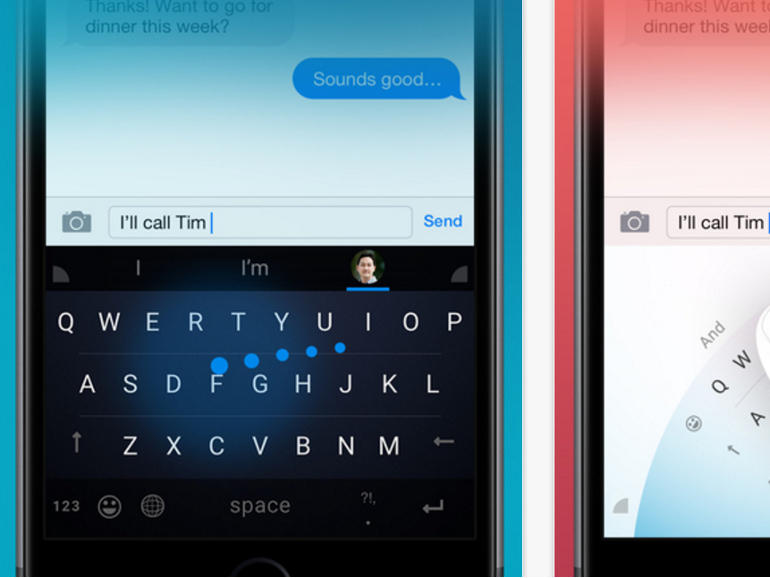
Microsoft’s Word Flow version 2.1 update also irons out a few iOS 10 glitches and introduces an option to create new themes and key borders.
Image: Microsoft
Microsoft has updated its smart keyboard for the iPhone to accept and predict when you want to curse.
That means “ducking duck no more”, according to Microsoft in the release notes for Word Flow version 2.1, its predictive and swipe-friendly keyboard for the iPhone.
Rather than persistently attempting to sanitize a phrase, the keyboard will learn to go with the flow and predict a swear word once it’s been typed a few times.
“Swear words filter: ducking duck no more! After you type out the word a few times, the keyboard will learn it and start predicting it when you tap or swipe,” Microsoft says.
The update also irons out a few glitches related to iOS 10 and introduces a new option to create new themes and key borders.
This update is the first to Word Flow since Microsoft released version 2.0 of the word-predicting keyboard in August, just four months after releasing version 1.0 with its arc-shaped keyboard for easier one-handed typing.
The update added new options to use Bing to search for the web as well as animated GIFs, contacts and images.
Word Flow comes from the experimental Microsoft Garage lab and was developed by teams in Microsoft Research and Bing. Although it’s been around for a nearly half a year, the keyboard app is still limited to iPhones and iPads connected to the US App Store and only supports English.
The rapid move to version 2.0 appeared to be a response to Google’s Gboard gesture-based keyboard, which arrived just ahead of it with support for multiple languages and was available globally from the outset. Google’s keyboard, of course, integrates search and offers emoji, text, and GIF suggestions.
iOS and Android keyboards are one avenue that Microsoft has expanded after failing to create marketshare for Windows Phone. This strategy includes the $250m it forked out for SwiftKey, one of the most popular predictive swipe keyboards on Android, but also its Hub keyboard for iOS and Office 365.
Apple for its part relaxed its ban on third-party keyboards with the release of iOS 8 in 2014, also boosting prediction features in the native iOS keyboard.
But with iOS 10, Apple has channeled QuickType prediction improvements to its Messages app, which is now capable of emoji predictions among other features.
MORE ON MICROSOFT
Microsoft lays off hundreds of employees this week, largely in Redmond, London
Microsoft cloud chief: Our early IoT investment sets us apart from Amazon
From open-source hater to no. 1 fan: Microsoft now tops Google, Facebook in GitHub contributors
Microsoft’s SwiftKey adds AI: Now it’s even smarter at knowing what you want to type
Microsoft rechristens its ‘Health’ fitness apps as ‘Band’
Global DNS outage hits Microsoft Azure customers
How this small wearable could help doctors spot Parkinson’s earlier
TechRepublic: 10 projects ditching Microsoft for open source – plus one switching back
CNET: 5 reasons to install Microsoft’s Word Flow keyboard on your iPhone


